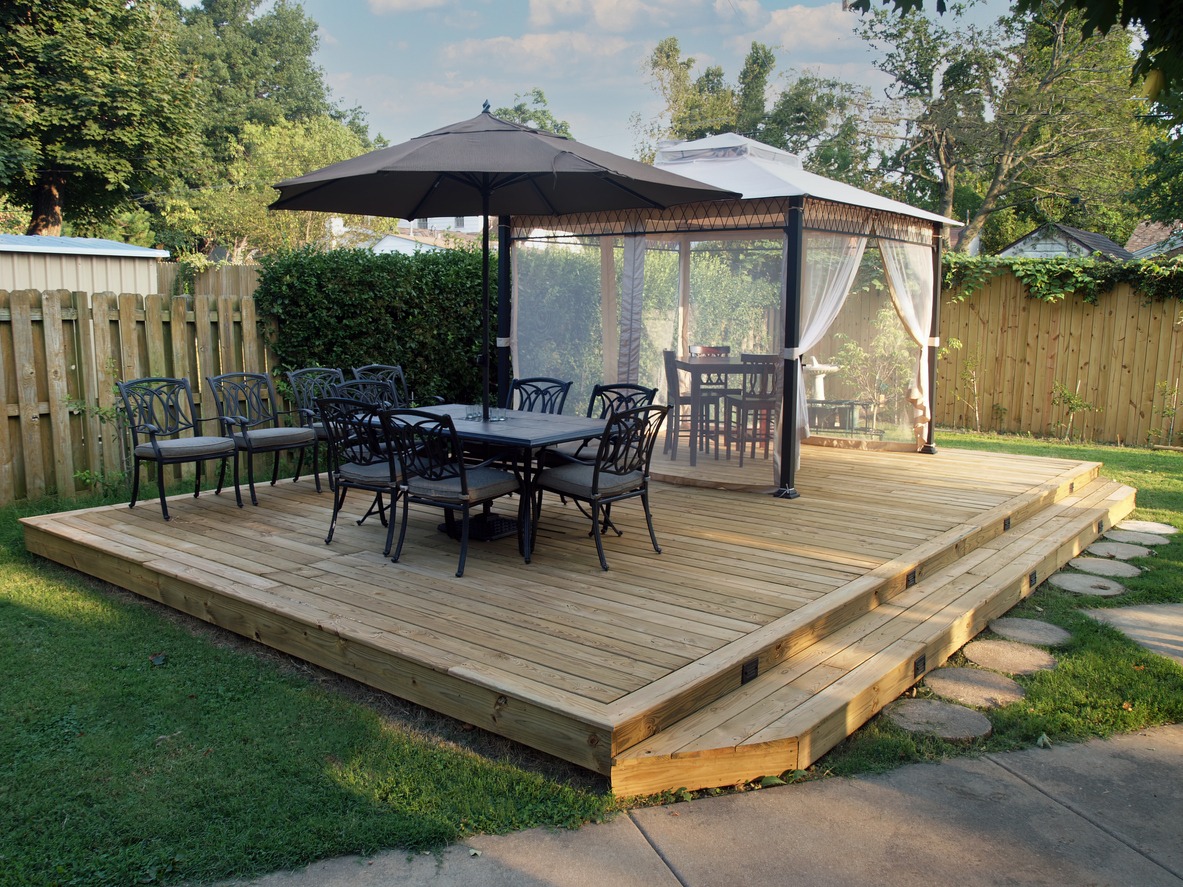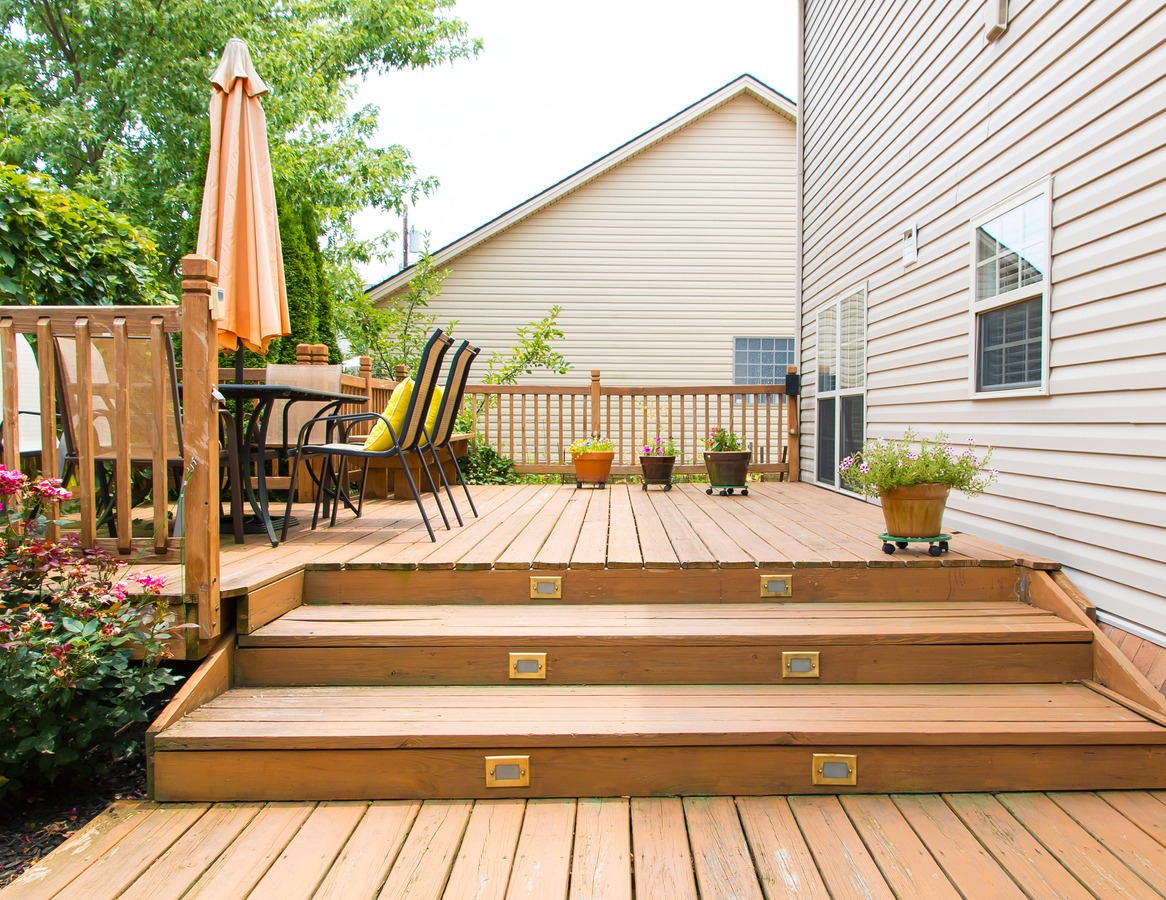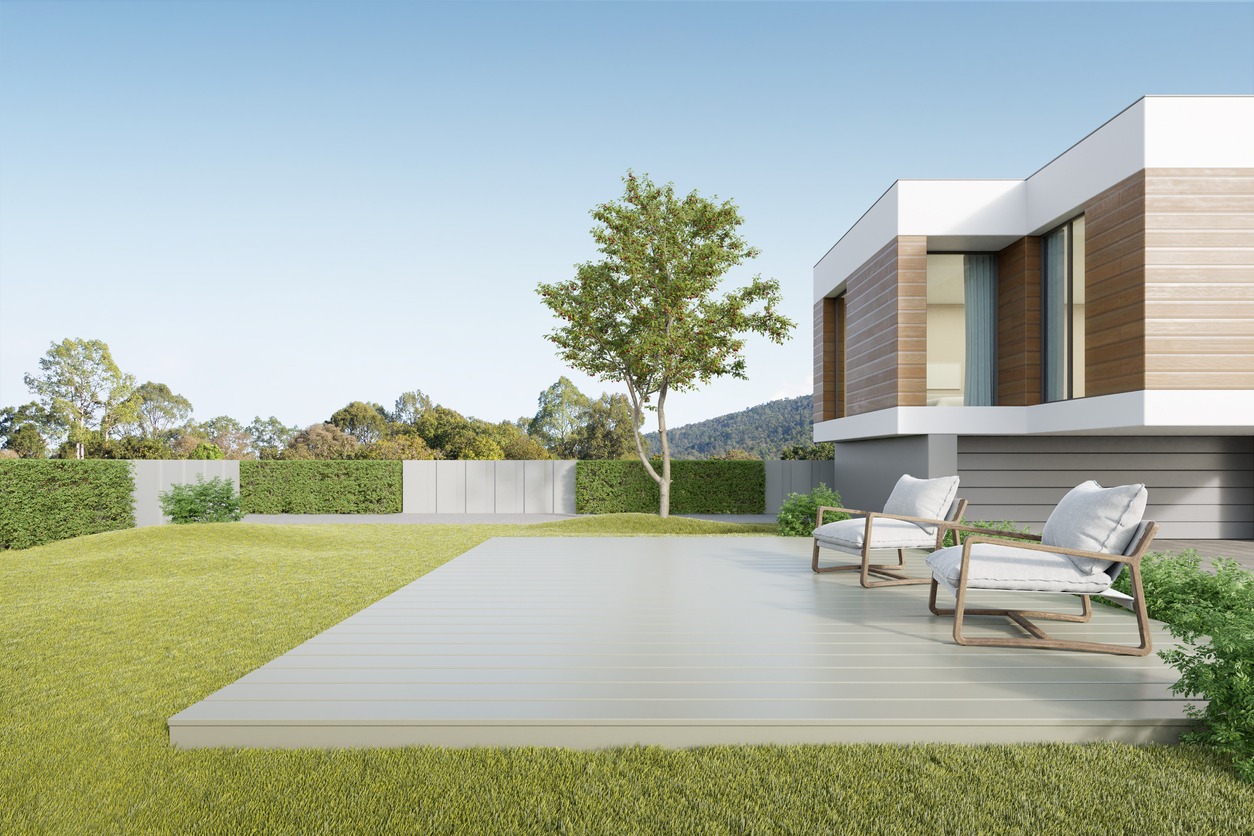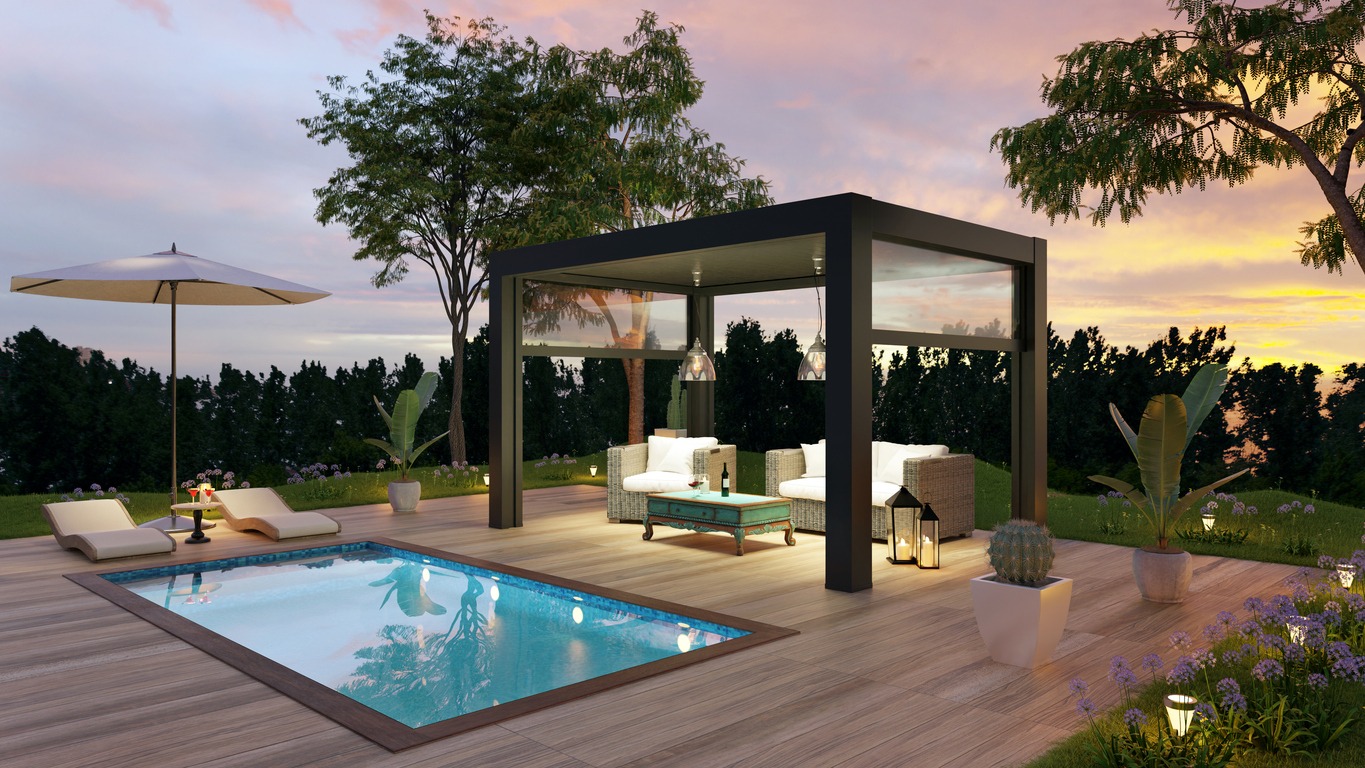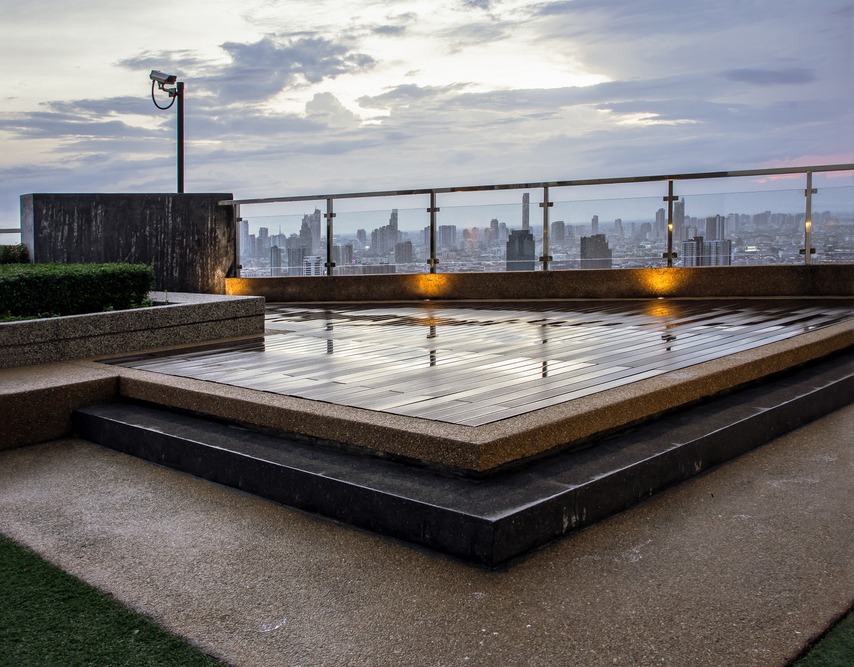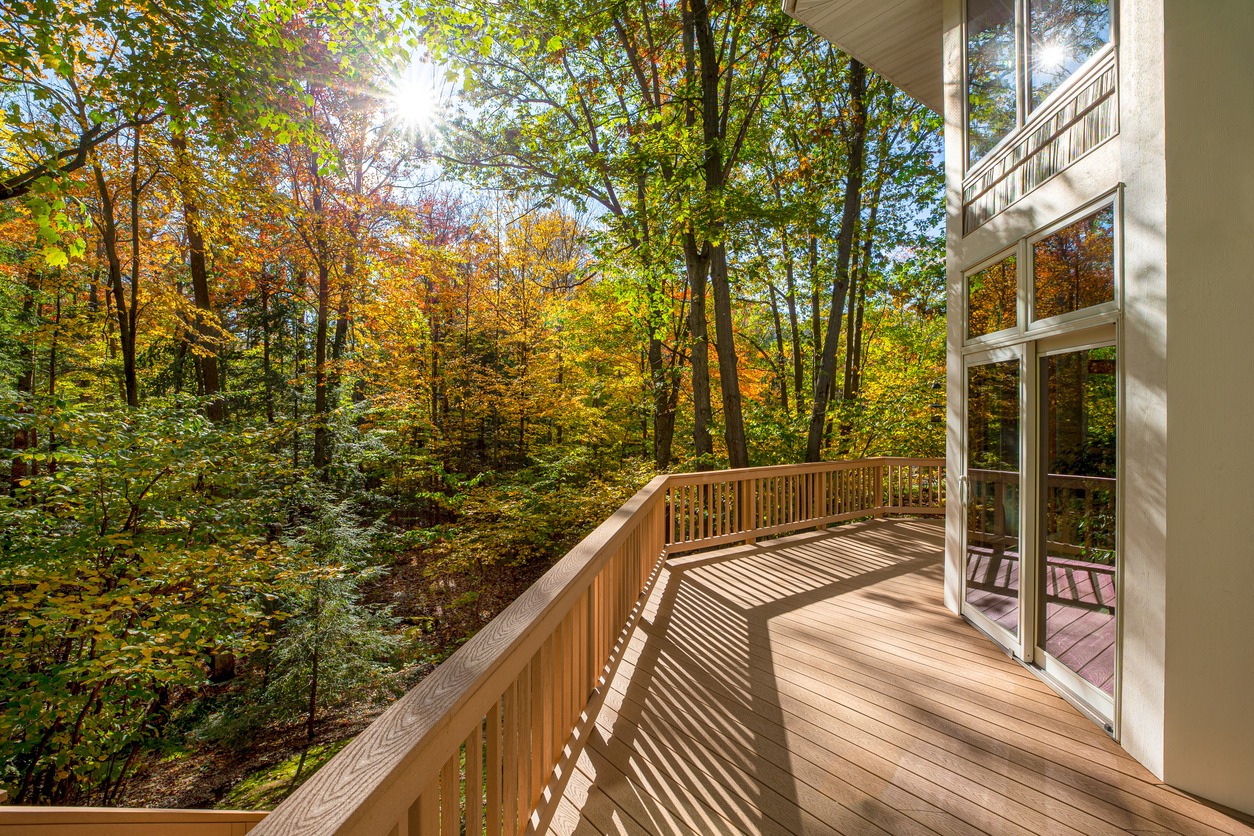Decks are among the popular additions to single-family homes, particularly those that have large yards. They are platform structures that are often made from wood or composite decking materials. They provide an outdoor space where homeowners can entertain their guests or relax with their family members. Decks and patios have several similarities, but unlike patios, most decks are raised above the ground. They can also include seating areas, lounge chairs, screening walls, overhead protective structures, and other accessories.
When choosing between the different types of decks, focus on creating an outdoor space that matches the style of your home and provides a space where you can enjoy family activities and personal relaxation. There are several different types of decks to consider before building your own at home. A lot of available designs are commonly attached to the house, but others also stand alone in the yard or surround a pool. Decks can be categorized into different types, including basic structural design, location within the landscape, or intended use.
If you are planning to build a deck in your outdoor space soon but still don’t know what type to choose, we are here to help you. In this article, we are going to give you a guide to the different types of decks, as well as a few tips on how to choose the best one for your property.
The Different Types of Decks
There are many different types of decks to choose from, such as attached, detached, multi-level, or custom-built. Learn more about these types below:
Attached Deck
An attached deck is the most common type of deck. It is structurally affixed to the home and is designed as an extension to an existing room, such as a kitchen, family room, or dining room. An attached deck is often accessed by doors that allow free passage between the indoor and outdoor spaces. An attached deck can either be a simple ground-level platform or a multi-level structure complete with stairways and landings.
Most attached decks are connected to the house by means of a ledger board that is firmly anchored to the framing of the home. This makes them solid and strong, but are still subject to building code requirements since they are considered structural additions to a home. When an attached deck is elevated above the ground, they need to be supported by posts and footings based on building code requirements. Such decks need to have construction permits and inspections by city officials.
One of the best things about an attached deck is that it can help enlarge and extend key indoor spaces like kitchens. It is a good multi-use area and can add real estate value if maintained well. However, heavy use of such a deck may need frequent maintenance. If it is elevated, it also needs code-approved railings and stairways.
Detached Deck
A detached deck is structurally the opposite of an attached deck as it is not attached to a permanent structure. Instead, it is built free standing somewhere in the yard, usually linked to the house through a pathway. It is also sometimes called a floating deck or a platform deck. They are often built without the elaborate footing-post-beam structure needed by an attached deck. This makes them a very good choice for DIYers. In many communities, no building permit is needed to construct a detached deck.
You can create a floating detached deck by resting it on concrete blocks or simply on the ground itself. If the area is not flat and level, a detached deck can be built with traditional footings and short posts to support the beams and structural members. A detached deck is probably the easiest type of deck to build for DIYers. However, it often needs an additional walkway or patio for access.
Multi-Level Deck
A multi-level deck features a series of several separate decks on separate levels connected by stairways. This is a good deck style if your yard has hills, slopes, and rocky landscaping that may not accommodate any outdoor living space. It’s because it is easier and cheaper to build a deck over a sloped or rocky area compared to leveling the land for a patio.
This type of deck may include segments that are anchored to the house as attached decks, as well as detached areas that are connected with stairways. Compared to standard square or rectangular decks, multi-level decks are way more expensive due to the additional materials and labor they need to be built.
The good thing about a multi-level deck is it can be built in phases to accommodate your budget. However, it can be difficult for DIYers to build, and it needs a considerable amount of regular maintenance.
Wraparound Deck
A wraparound deck is a type of attached deck but bigger. It is usually a bit of elevated structure that continues around two or more sides of the house to connect different areas. It is sometimes covered by roofing called wraparound porches. It features railings in addition to an opening for steps. It can be narrow or spacious depending on your preferences.
The best thing about a wraparound deck is that it allows you to follow the sun or shade throughout the day. Aside from that, it also helps extend the living space of your home, and may also assist with indoor air circulation when the access doors are open.
However, wraparound decks are often narrower compared to standard attached decks. Building them may also need more time and money due to their lengthy size, and if you choose to have them covered, the roofing materials may cost you more.
Swimming Pool Deck
If you have a swimming pool at home, decking is also a great choice around it to make the area slip-resistant. Aside from that, it can also make your poolside cooler as decks do not get as hot as patio masonry materials like concrete or stone. It can provide more space for swimmers to lounge by the pool.
A poolside deck often rests on the existing concrete apron around the pool. But there are times when they are built around the above-ground pools to create the illusion of an in-ground installation. In this type of application, the poolside deck can be attached, extending from the house to surround an above-ground pool.
A swimming pool deck is great as it is cooler on bare feet and is slip resistant. However, it needs frequent maintenance and has a shorter life than paved surfaces. Also, splintering can be a hazard to bare feet.
Rooftop or Over Garage Deck
A rooftop deck or a deck on top of a garage is a great choice if your home has a flat roof to work with. But you must get the structural and engineering aspects tested first to make sure that your deck will be safe and stable. This is a perfect deck for people living in urban areas. It can offer you better views compared to a ground-level deck. In addition to that, it also allows more privacy, and it can pick up breezes more since it is elevated. You may also choose to transform the deck into a garden, reading space, or lounge.
Entryway Deck
This type of deck is commonly built at the front of a home. It extends the outdoor living space toward the street. If your home does not have a front porch, building an entrnce its appeal. You just need to make sure that the entryway deck matches the style and structure of your home. The front of your house should have a cohesive look and not appear as if the deck was an afterthought.
Custom Deck
A custom deck refers to a personalized deck for your specific needs. Most of the time, it combines two or more deck types. It can be used as a space for outdoor grilling, dining, or vertical gardening. Aside from that, it can also be an area where you can sunbathe. It can feature trellises and built-in flower boxes, gazebos, pergolas, or a roof shade. You can also add some built-in benches, outdoor heaters or fire pits, stairs, railings, and pathways. It is basically a deck that is designed specifically for your space.
How to Choose the Right Type of Deck
When picking the right deck for your home, there are important factors that you need to consider. Below are some of them:
Function
It is important that you decide first what the function of the deck is. Most decks are multi-function structures that can support dining, cooking, entertaining, and other activities. But you can also dedicate it to specific functions. Knowing its intended use is one of the things that can help you choose the right type of deck that will achieve your goal.
Location
Picking the right deck also requires that you consider where you want it to be placed. Ask yourself if your goal is to create a living space along the back of your house, the side yard, or the front entry. Or maybe you want a living space out in the yard and away from the house, such as one surrounding the pool? Sometimes, choosing the type of deck depends on where you are planning to build it.
Building Code Considerations
Another thing that may dictate the type of deck you choose is the building code requirements. For instance, choosing elevated decks will require stairways and protective railings, which can make the construction a bit pricier. If you want to avoid the complications of permitting and inspections, opting for detached decks is the best choice. Therefore, pick one that is most convenient for you.
Materials
Another thing that you have to consider is the deck materials. Decks can be made using different materials, such as natural wood, treated lumber, or composite lumber. When you choose materials, you also have to think about how much work it will be to maintain the deck. For example, natural wood needs regular cleaning, re-staining, and resealing, while expensive composite lumber requires less maintenance work.
Budget
The cost of the deck must be taken into account when selecting it. A particularly big, multi-level, wrap-around, or kitchen deck can be a significant home addition, even if you build it yourself. Take an assessment of the household’s financial situation before starting the decision-making process to figure out what you can afford to construct.
Conclusion
There are indeed many different types of decks that can be built to enhance the appearance and functionality of outdoor spaces. Each type offers unique features and benefits, catering to different preferences, architectural styles, and budgets. When picking a type of deck, it is essential that you consider the important factors to make sure that your chosen deck will match your preferences and provide a beautiful, functional, and long-lasting outdoor living space for your property. We hope this post helped you learn more about the different types of decks.

